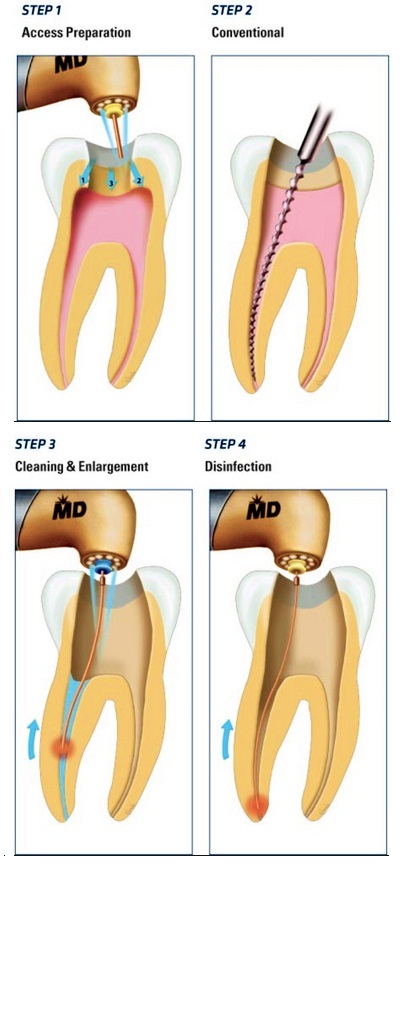
Root canal treatment (also called endodontics) is needed when the blood or nerve supply of the tooth (known as the pulp) is infected through decay or injury. You may not feel any pain in the early stages of the infection. In some cases, your tooth could darken in colour, which may mean that the nerve of the tooth has died (or is dying). This would need root canal treatment.
If the pulp becomes infected, the infection may spread through the root canal system of the tooth. This may eventually lead to an abscess. An abscess is an inflamed area in which pus collects and can cause swelling of the tissues around the tooth. The symptoms of an abscess can range from a dull ache to severe pain and the tooth may be tender when you bite.If root canal treatment is not carried out, the infection will spread and the tooth may need to be taken out.
Root canal treatment is required in cases of
1.Tooth nerve tissue has started to degenerate in case of attrition, abrasion.
2.Teeth causing pain.
3. Tooth nerve exposure in case of fracture or trauma to the tooth.
4. Patients with acute tooth abscess.
The procedure follows as
What First a local anesthesia is administered to the tooth and the tooth becomes numb so that the procedure is more pleasant & comfortable.1. In the next step a drill is used to gain access to the area inside the tooth where the nerve is. A hole is made inside the tooth, to open the pulp chamber to allow access to the canals.
2. Next the pulp chamber and the root canals are cleaned with endohandpiece using rotary instruments.
3. The root canals are flushed with antibacterial solution. Root canals are further cleaned scraped and scrubbed & reshaped to free them of all debris with the endorotary file instrument.
4. Once the root canals are dry & clean, they are filled and sealed with a biocompatible material like as Gutta Purcha Points.
5. The tooth cavity is then filled with a permanent tooth color light cure composite filling material.
6. A root canal treated tooth should be ideally crowned after some days.
Root canal treatment usually require 3-4 sittings however depending upon the case ,Single sitting root canal treatment can be carried out. At Dental One we prefer single sitting root canal treatment.
Advantage of Single sitting root canal treatment
1. Takes only half an hour to finish procedure thus saves time.2. A single visit procedure.
3. The patient does not feel discomfort by local anesthesia again and again every visit.
4. Favorable in patient who do not show up after first sitting in traditional old root canal treatment.
5. This reduces the re infection chances by number of visits.



 How to Reach Us
How to Reach Us  Photo Gallery
Photo Gallery 